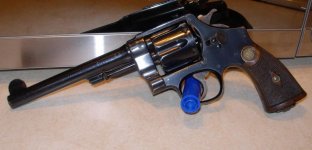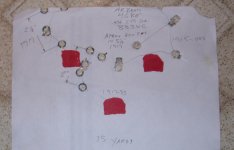I have one that has been converted to use the .45 acp with moon clips
or .45 AR. I much prefer using AR brass for handloads. I get 766 fps
with a .452 255 gr SWC over 5.3 grs W231. I plan to try some .454
bullets when I run across some at a gun show.
or .45 AR. I much prefer using AR brass for handloads. I get 766 fps
with a .452 255 gr SWC over 5.3 grs W231. I plan to try some .454
bullets when I run across some at a gun show.
Attachments
Last edited:














